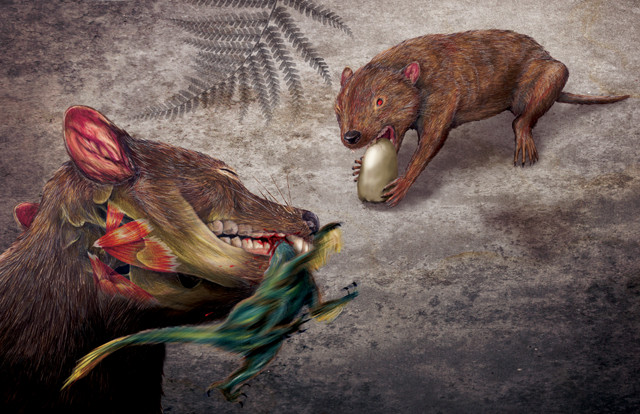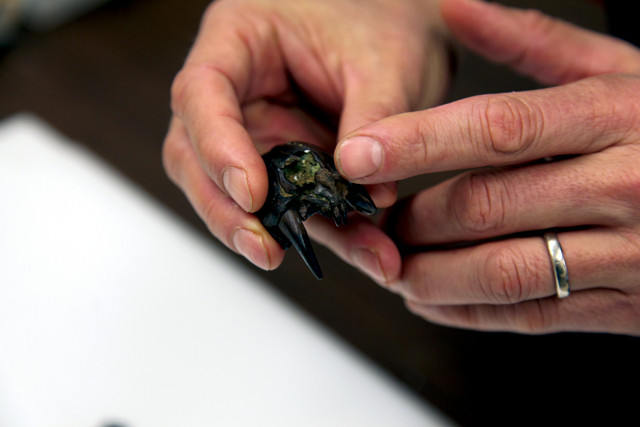
by Mary Caperton Morton Tuesday, April 18, 2017

An artist's depiction of Didelphodon on the hunt. Credit: Misaki Ouchida.
Newly described fossils from one of the earliest-known marsupials are shedding light on the evolution of mammals during the Mesozoic and revealing an animal with an impressive bite, perhaps strong enough to take down a dinosaur.
Found in 66-million- to 69-million-year-old deposits in the Hell Creek Formation on the border of Montana and North Dakota, the fossils include a nearly complete skull, a partial snout and two nearly complete upper jawbones from an opossum-sized marsupial known as Didelphodon vorax. Didelphodon was previously only known in the North American fossil record based on fragmentary fossils.
Gregory Wilson of the University of Washington and his colleagues took CT scans of the fossils to reconstruct the animal’s head and determine Didelphodon’s bite force. They reported in Nature Communications that the animal had the strongest bite force, pound for pound, of any known mammal. Didelphodon had a bite force quotient — the measured bite force scaled for body size — of 201, higher than weasels (164) and hyenas (113). The sharp canines, similar to a domestic cat’s, suggest that Didelphodon was able to bite into bone and likely lived as a predator capable of taking down prey its own size or larger.

New fossil specimens offer the most complete look at the Mesozoic marsupial Didelphodon, including its prominent canines. Credit: The Burke Museum.
“What I love about Didelphodon vorax is that it crushes the classic mold of Mesozoic mammals,” Wilson said in a statement. “Instead of a shrew-like mammal meekly scurrying into the shadows of dinosaurs,” it “would’ve been a fearsome predator on the Late Cretaceous landscape — even for some dinosaurs.”
The find also adds to the history of marsupial mammals, which raise their young in a pouch and are better known from South American and Australian fossils. Previous finds have pointed to South America as the origin of marsupials, but anatomical features of Didelphodon’s skull suggest that marsupials may have originated in North America 10 million to 20 million years earlier than originally thought, and then later dispersed and diversified in South America.
© 2008-2021. All rights reserved. Any copying, redistribution or retransmission of any of the contents of this service without the expressed written permission of the American Geosciences Institute is expressly prohibited. Click here for all copyright requests.